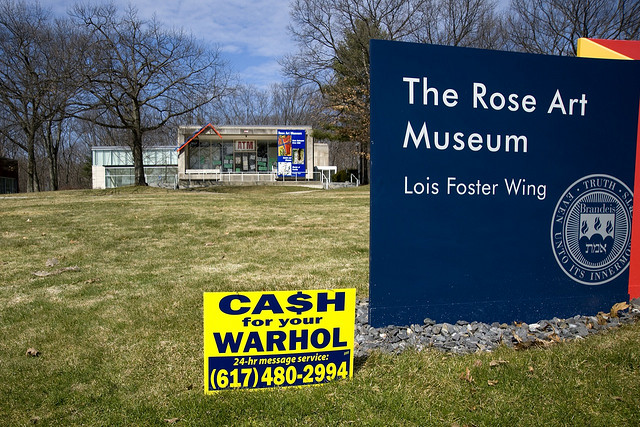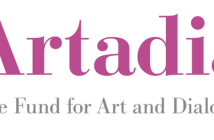On Sunday, the Boston Art Dealers Association (BADA) gathered a panel of Boston-area collectors to speak to their passion for discovering artists and owning art. Its moderator Nick Capasso, Director of the Fitchburg Art Museum, brought his own perspective to the discussion: his questions drew comparisons between the responsibilities and approaches of museums as collecting institutions, and those of individuals as they accumulate artworks. These queries touched on how collections are planned, reliance on expertise in the field, how collectors find the art they love, and how long that love lasts.
The panelists, who were pretty diverse in interest, age, and gender, spoke candidly about what motivates them to buy a work of art. Unanimously, they acknowledged that the compulsion to own original artwork comes from a burning curiosity as well as deep respect for artists and the objects they create. Also unanimous, and far less expected, was how young they were when they started collecting—Bobbi Hamill, at seventeen, had pooled together six months worth of waitressing tips because she'd fallen for a $140 watercolor. Other works, which she feels she has since outgrown, have moved on to new owners, but she still owns and loves the watercolor today. Constance Kantar and Ernst von Metzsch both grew up in artistic households, and started their respective painting collections close to half a century ago.
In the case of several panelists, their partners are completely involved in the collection process, a fact that reflects how collecting art is as much a way of life as it is a passion. Geoff Hargadon and his wife, Patricia, started buying original New Yorker cartoons when you could still acquire them for $200 bucks a pop. About a decade ago, this curiosity for more vernacular art forms led them to street art, when few showed interest in it. The artists tended to think Hargadon was a cop before it even occurred to them he was interested in buying their work. Even though their tastes in art often differ, together Bobbi and Tim Hamill collect tribal art, primarily Indonesian, and run the Hamill Gallery in Roxbury.
As a life-style, it isn't always pretty. Dave Greenblatt admits to getting into debt, and all the panelists shared a knowing laugh about running out of space. In their homes art hangs salon-style, on doors, in bathrooms, and even fills the spaces under beds. Sometimes works are shed, resold, returned to their previous owner, but much of the time, the collection just grows and grows, with little forethought. Unlike institutions, which are under obligation to design and implement plans identifying what should be acquired for the overall wealth and balance of a collection, individual collectors can afford to be far more impulsive, follow their instincts, and collect from the heart more than from the mind. Greenblatt did add nuance to this by confiding that he often buys art he doesn't understand, works that challenge him and make him uncomfortable. Not a single panelist spoke of art as an investment. As for the imagined future of their collections? They hope the works will go to their children and grandchildren, to close friends, and perhaps a couple of works will join a museum.
It's hard to set limits to one's enthusiasm—most rules get broken within a week, says Kantar—but Greenblatt, who collects photography and multiples, has found over time that he needs to be more strategic about what he buys. "Sometimes I need to stop myself: 'Uh-oh, another penis.'" Capasso asked the panel about their research process, who guides them as they make their choices, and whether they've ever employed a consultant to scout out works on their behalf. To the last point came a resounding "No!" Part of the thrill of collecting contemporary art comes from interacting with artists and speaking to dealers who know their artists and patrons well. Much of it is about building relationships. Bonni Hamill brought up the issue of provenance, which, contrary to the practice of acquiring contemporary works, is essential when gauging the authenticity of tribal art offered by dealers around the globe.
A voice in the audience during the closing Q&A asked about the value of art fairs: Are they a good place to start learning about art and what to collect? The very prospect of a fair seemed to make the speakers weary. "Art fairs are not fun," said Greenblatt, "It's all about opulence and wealth, and if anything would make you not like art, they will. Go to your local dealers." Constance Kantar highly recommended taking a class to learn more about particular periods of art history, versus the art fair binge approach which Capasso approximated to "going to the library and trying to read all the books in one afternoon." Geoff Hargadon suggested MFA exhibitions and art college auctions, which prompted Boston-based dealer Arlette Kayafas to speak up from the crowd: "When you buy from an emerging artist you are making a huge difference in their life. As a result, they may not have to take that second job." While this may make it sound like art collecting is a form of philanthropy, don't kid yourselves. These collectors certainly find pleasure in supporting artists, yet years of looking have honed astute analytic and visual skills in each of them, and they know exactly what they want when they see it.
- Geoff Hargadon, Cash for your Warhol Installation at the Rose Art Museum
Icon image: Pende Mask, from the collection of Bobbi and Tim Hamill, Hamill Gallery, Boston. Photographed by Tim Hamill.
www.hamillgallery.com





